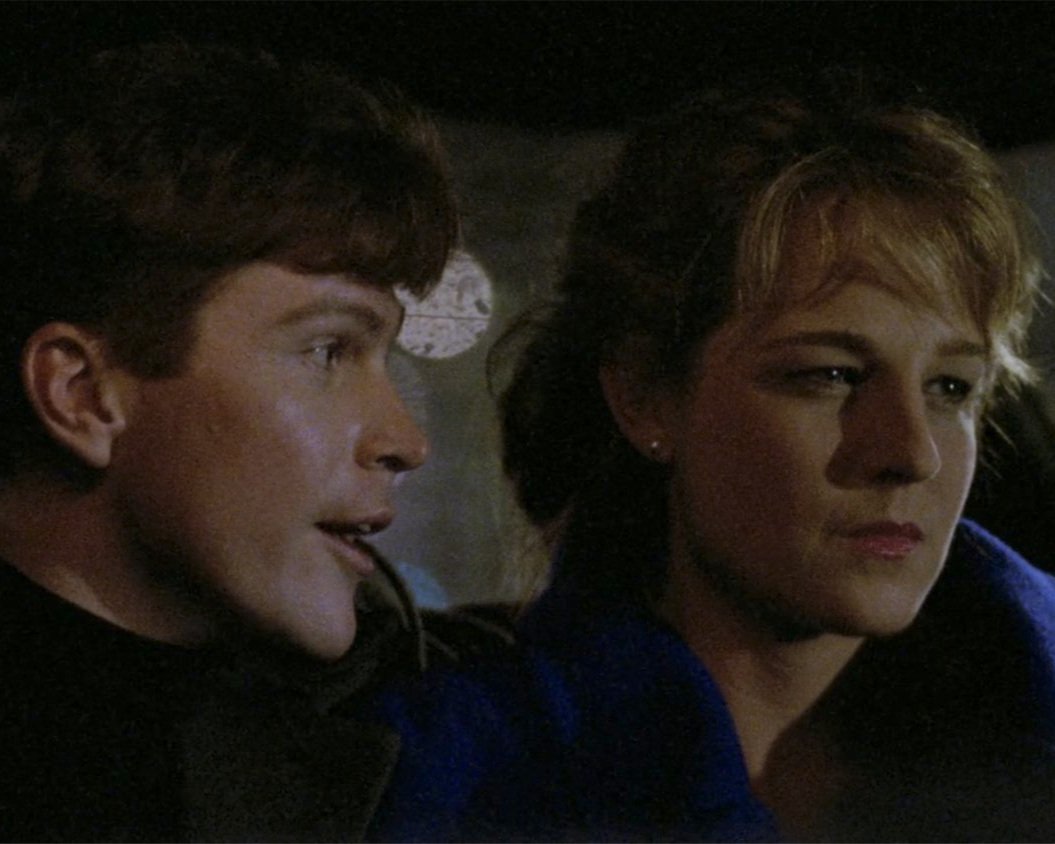Helen Hunt Filmography Part 6: Murder In New Hampshire
Sex and murder…and an early entry in the “metal music made me do it” paranoia.
Murder in New Hampshire (1991) is a weird one. Based on the true story of Pamela Smart, a young woman who seduces a high school student and then convinces him to murder her husband. As a TV movie the depictions of sex and murder are more implicit than explicit.
Pamela Smart (Helen Hunt) marries her husband Greg (Hank Stratton), but is quickly out of love with him. The initial foundation of their relationship, being rebels and loving sex and metal music, becomes shaky when Greg gets square and cuts his hair.
This is the look of a woman falling out of love because of a haircut.
Seriously, this relationship is over right there.
Greg assumes that Pam will just go along with his new direction in life, but she is not on board. She is dissatisfied with her job as Media Director at the high school. She wants to become a news anchor, but can’t land a job.
She becomes friends with some of the students and take one particular girl under her wing as an intern. She then begins to seduce, Billy (Chad Allen) who is 16, and uses her intern as third-wheel cover.
**If you watch clip reels of Helen Hunt’s films, you may see a scene where it looks like Helen Hunt is kissing another woman, and wonder how you missed that movie. But it’s not another woman. It’s this boy, and they just both basically have the same haircut…because the 80s.**
She tells Billy that her husband Greg is abusive although the movie presents him as more passive and disinterested, so we’re left to assume this is a manipulative tactic of Pam’s. Billy wants her to get a divorce and be with him, but Pam suggests instead that he kill Greg.
Throughout the movie she is very explicit about asking Billy to kill Greg, and comes up with a plan. She is not very circumspect about who she discusses this plan around, and her intern is aware of what Pam is suggesting, but she doesn’t think they’re serious.
Billy is understandably nervous to murder a man he doesn’t know, so he discusses the problem with three of his friends, and for $1000 split between the four of them, they agree to help him. That’s $250 per person to kill a man. Even adjusted for inflation that’s less than $600.
Billy has a number of false starts and failed attempts, but finally he and his friend kill Greg Smart. On the one hand there is a comical aspect to the crime because it goes about how you would expect when a bunch of15 year olds to do a crime. Their ineptitude is laughable, and a different version of the story could be a good very dark comedy.
On the other hand you have an adult sexually abusing a minor and manipulating him and four other adolescents to be involved in murder which is not so much funny.
The movie came out six months after the trial of Pam Smart and the boys who committed the crime. I think in an effort to capture the zeitgeist and capitalize on the public interest, the movie didn’t do a thorough or nuanced portrayal of the motivations of the players.
Pam in particular is a mystery. A lot of things are hinted at or suggested as possible motivations, but never explored in depth. Is it because she listens to metal music? Is she just attracted to guys with long hair? Is it money? Is it sex? Is it creating drama? Does she even have a coherent motivation?
Most of the actual trial appears to have focused on Pam’s financial motivations to kill Greg, including a $140,000 life insurance policy. This would explain why she didn’t just divorce him, but this is not presented as a clear motivation in the movie.
I would say that Helen Hunt does the best she can with the thin material. She is convincing as someone who both could and would manipulate a group of teenagers.
Pamela Smart and all four boys received prison sentences. The boys in the car served 13 years and 15 years. Billy and his accomplice served 25 years. Pam is still in prison.


